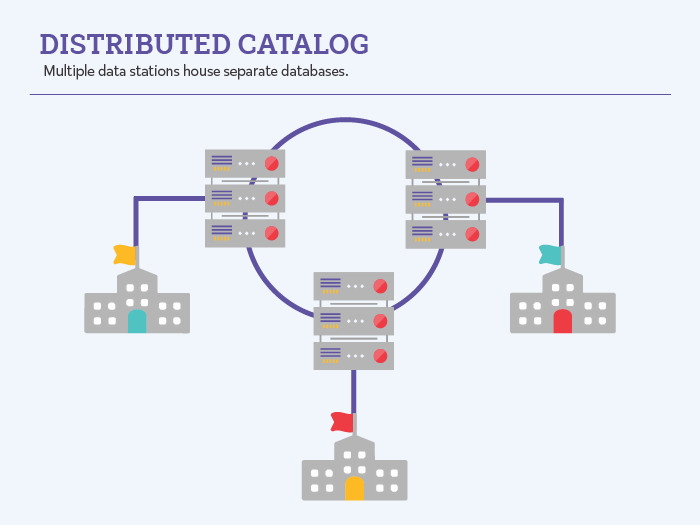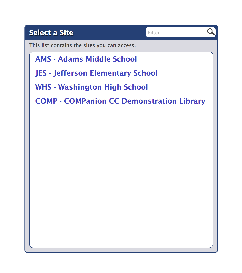Getting Started
How helpful was this page?
What is a Distributed Catalog?
Distributed Catalog gives operators and a group of sites the ability to share resources with one another, yet still manage and control their own collection independently. Library information is stored on separate Data Stations at each library or at a “server farm” in a central location. Patrons have the ability to either search an individual library, a group of libraries, or the entire district at once. Alexandria’s advanced search features allow libraries to simultaneously access all collections in real-time. Each library can choose an appropriate license level for their patron base and anticipated usage. Each library maintains control over policies, preferences and cataloging.
Areas Affected by Sites Management
Site Management and Circulation
The site (and corresponding Site ID Code) selected when the current operator initially logged in will become the current site for all proceeding circulation procedures and transactions.
Because the current site can vary depending on the operator who last logged in, when an item is scanned, it is identified as belonging to the site designated in its Site drop-down menu in the Copy Info subtab.
Item Location
The Copy Location and Copy Shelving options are ways of attaching secondary locations to a primary site (e.g. CDL Level 1 and CDL Level 2)
Therefore, when an item with a designated Site code is scanned by an operator who is logged in at the item's associated (i.e. primary) location, the item is treated as though it was book-dropped at “home” (i.e. it's owning library) and will not be placed in transit.
Your items will only be placed in transit if they belong to completely separate sites—as defined by their Site code.
Site Management and Address Books
The Standard Address Book contains all of your valid sites and search groups and is automatically updated with every new site created from the Sites Management window.
Address Book entries for your Distributed Catalog require an IP address of 0.0.0.0 and an associated Site ID Code and a Site Name for identification purposes; the Site ID Code drop-down menu will always contain a list of valid and available sites pulled from the Sites Management window.
If you are attempting to connect to an outside Data Station or an external d (i.e. another district) database, you must provide the appropriate IP address (e.g. 123.456.78.910) for that location. When the IP Address is anything other than 0.0.0.0, Alexandria is unable to access the outside union's Site Records List list and will no longer attempt to auto-fill the Site ID Code drop-down menu; however, this information is still required for validation purposes.
A Site can not be removed from the Sites management window until all existing Addresses associated with that Site are removed from your Address Books.
Site Management During Import
During the data import process, if a Site ID Code being imported doesn't match any existing in the Sites Management window, they will be replaced with the union site record. When this happens, the occurrence is documented in the Transaction Log and the Operation Information summary report of the Operation Management window.
Site Management and Security
New site records can be created in the Sites Management window by Administrator-level operators. It must be deliberately determined what other Security Groups have the ability to access and manually manipulate Sites management window information data. By design, this is not convenient; it should be a very rare and intentional thing to add new sites (or create new site codes) to a union and should typically only be done by the District Administrator or operators (with access) working at that primary site. Therefore, the number of operators that require Sites security privileges should be kept to a minimum.



